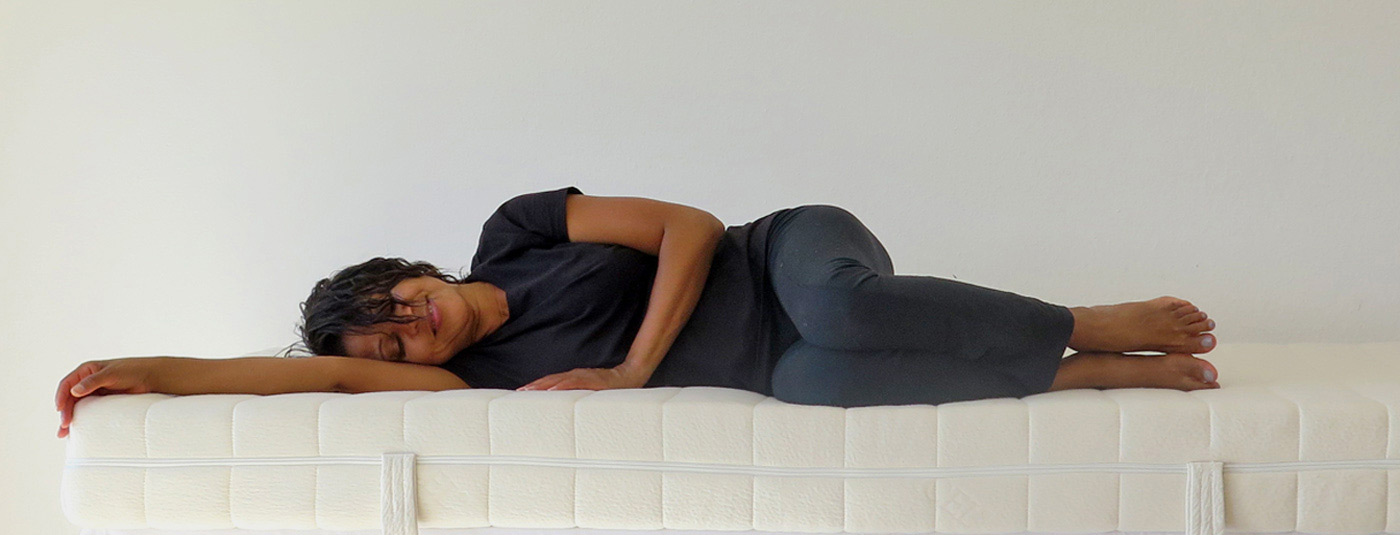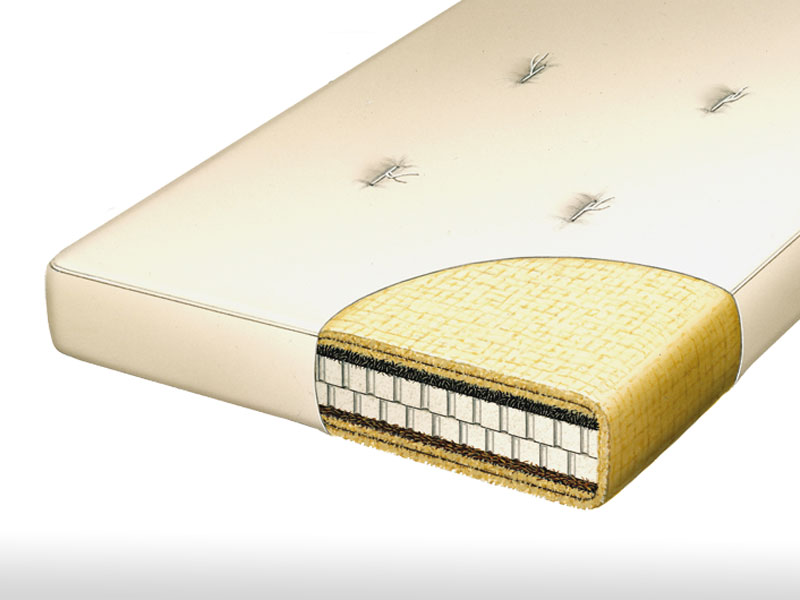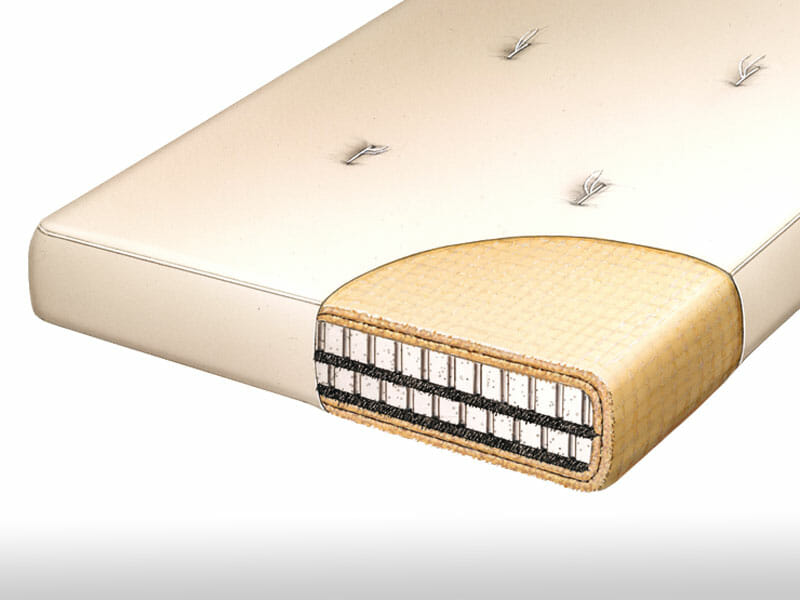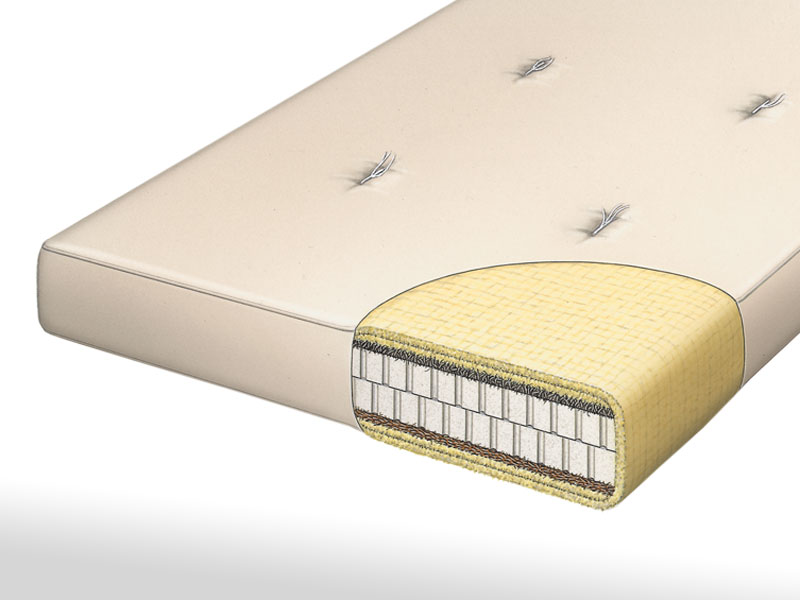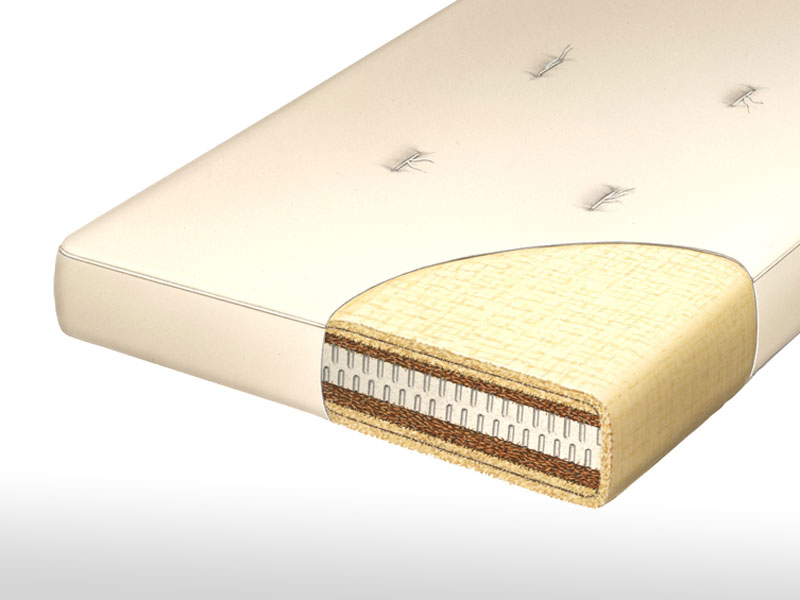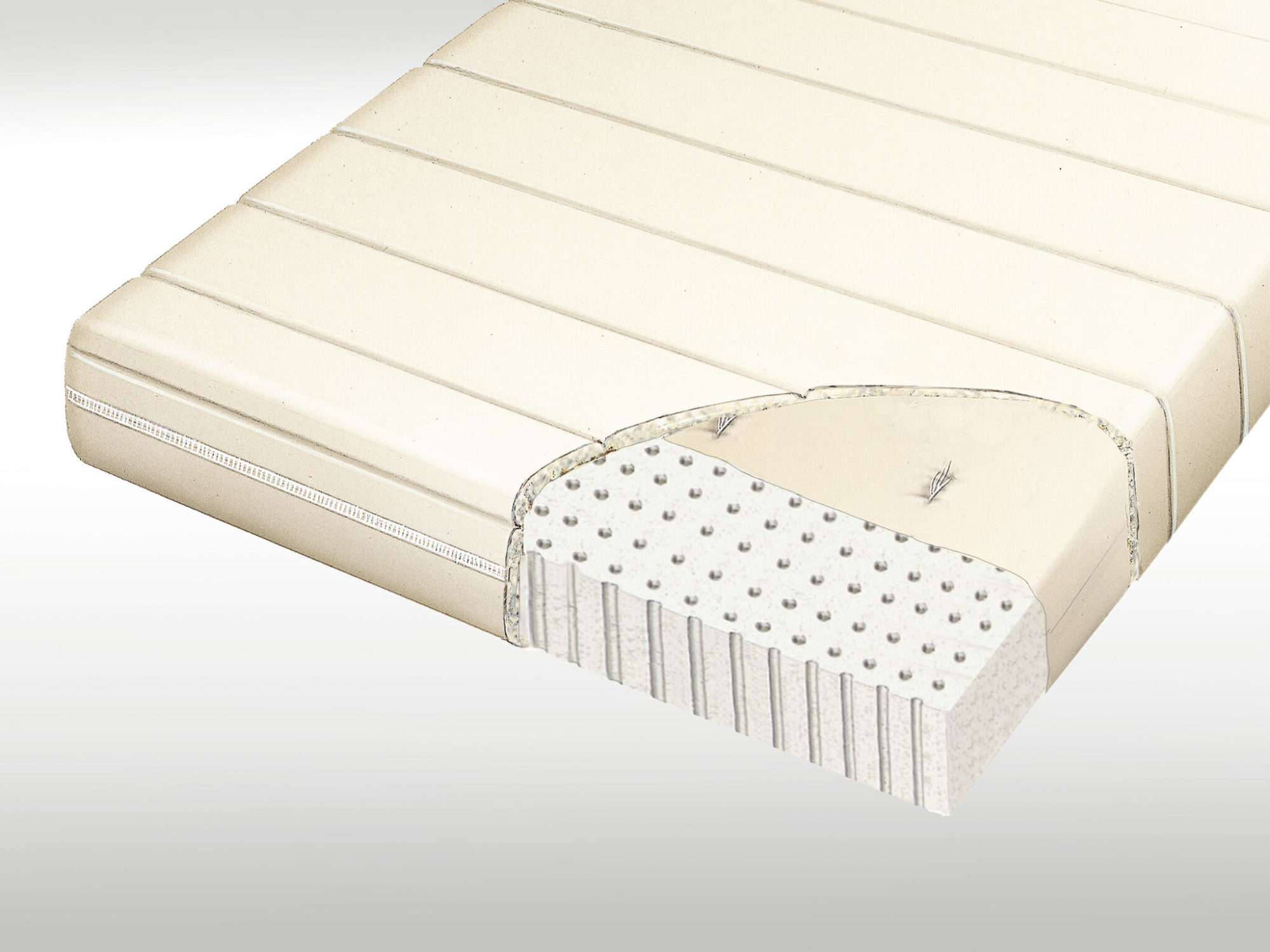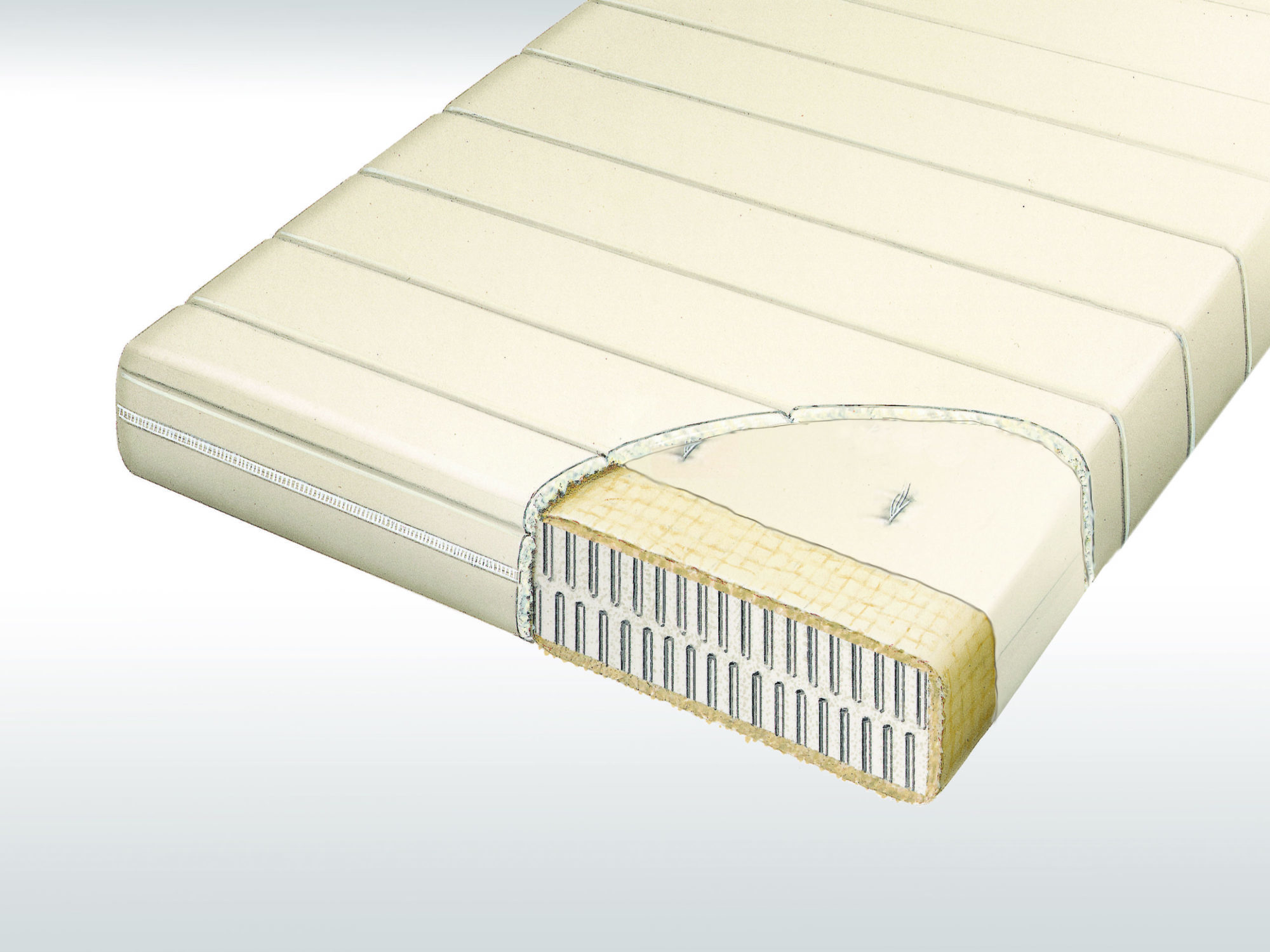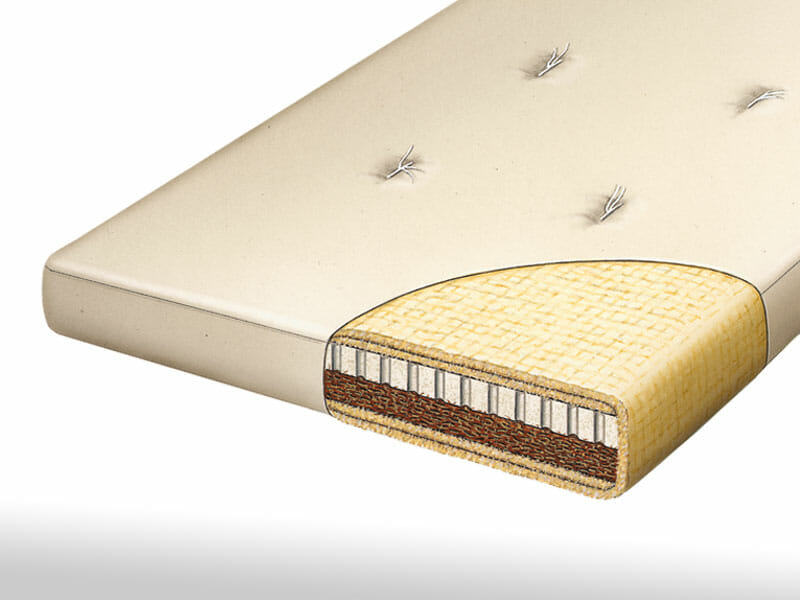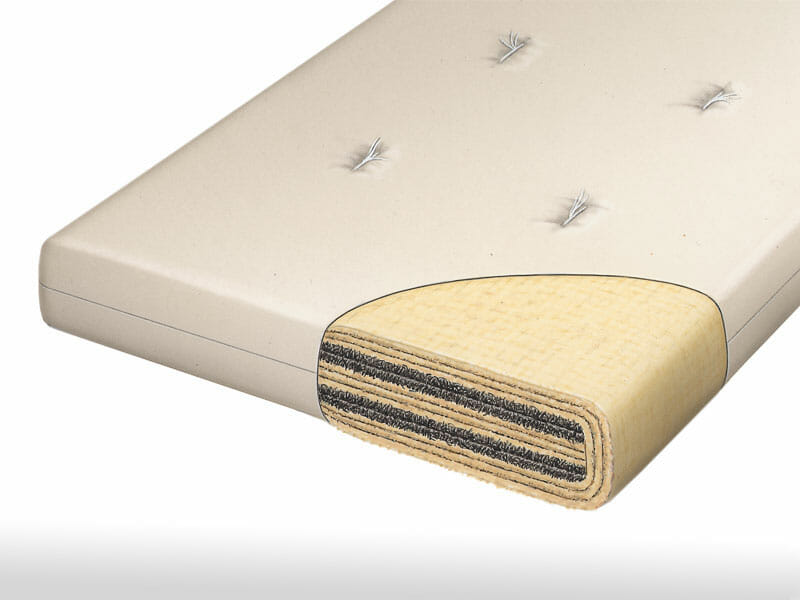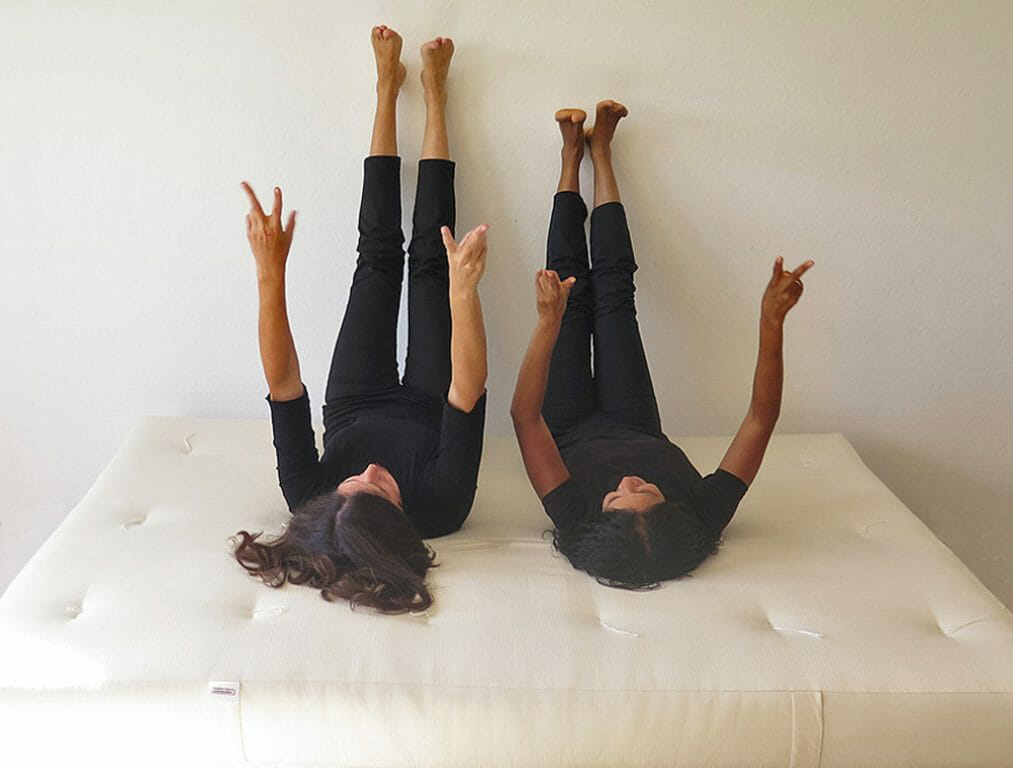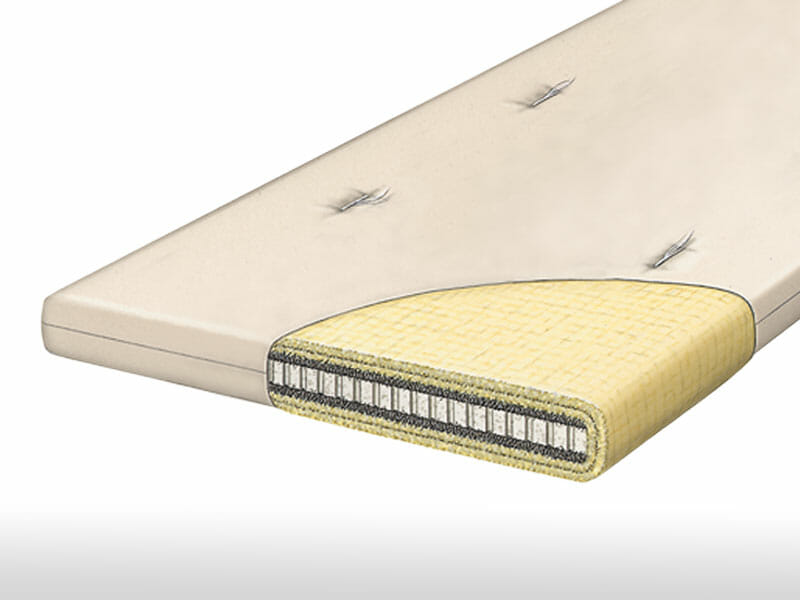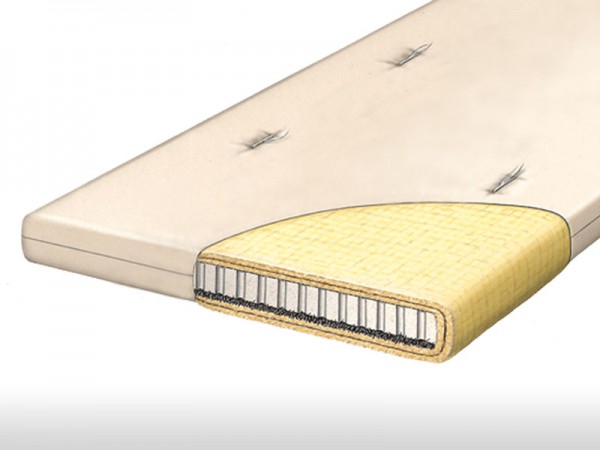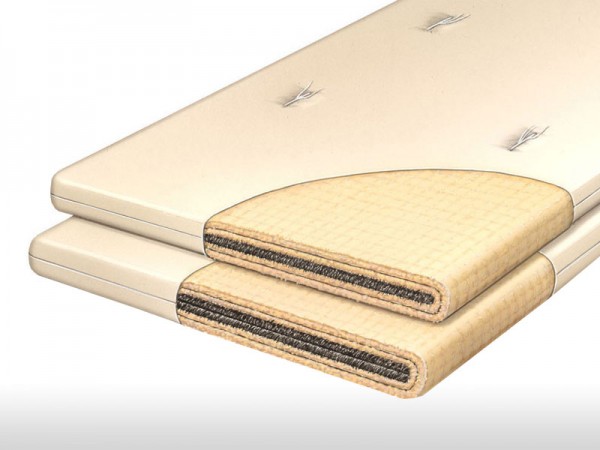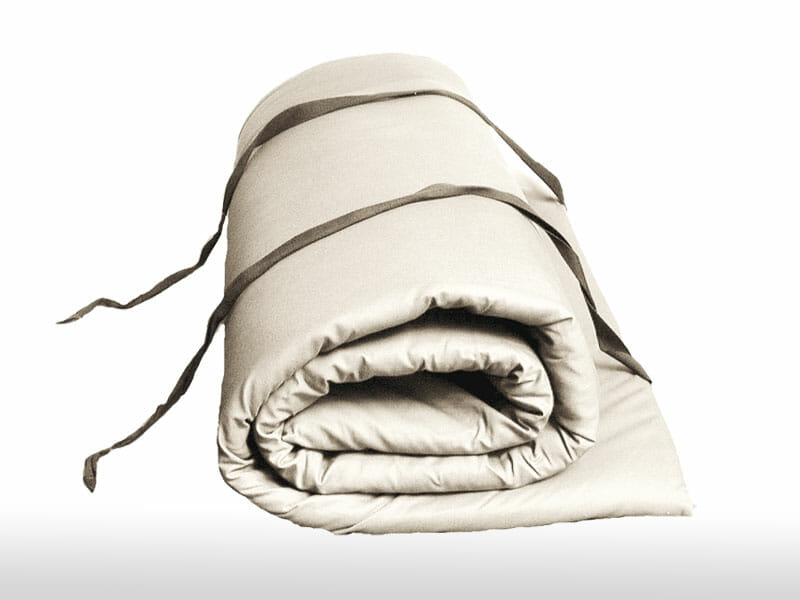Feel pure – Feel fine
Not objective criteria lead to the right mattress, but the personal body world and feeling. The always unique personal body world has little to do with stature or weight, but rather with life history and movement habits. Therefore our approach: To find the right mattress (to the own body world) among the natural mattresses by feeling, be it a latex mattress or a futon mattress.
To correspond to the range of different body worlds, we offer polarizing mattress groups. In one group the natural fiber pads dominate the lying characteristics, in the other the integrated latex foam. The properties of the first group are rather firm, passive-resting, those of the other group dynamic, active-swinging. We try to illustrate these differences with the terms “Feel pure” and “Feel fine”.
Natural mattress, latex mattress, futon mattress
The natural mattresses are made of high quality natural fibers with a core of natural latex. The “climate belt” made of virgin sheep’s wool and horsehair ensures the absorption of moisture and water vapor.
All materials used are regularly checked for harmful substances. You can find detailed information about the conception and the mattress materials on the website of our partner boyboks matratzen under “Schadstoff-kontrolliert“.
Due to the production in the manufactory you can also order all kinds of special sizes and custom-made products. The delivery time of a natural mattress, latex mattress or futon mattress usually takes between 10 to 14 days.
Due to our many years of experience we can guarantee you an outstanding quality. In our store in Frankfurt we will be happy to give you detailed advice and help you even if you are not satisfied with the mattress you have chosen.
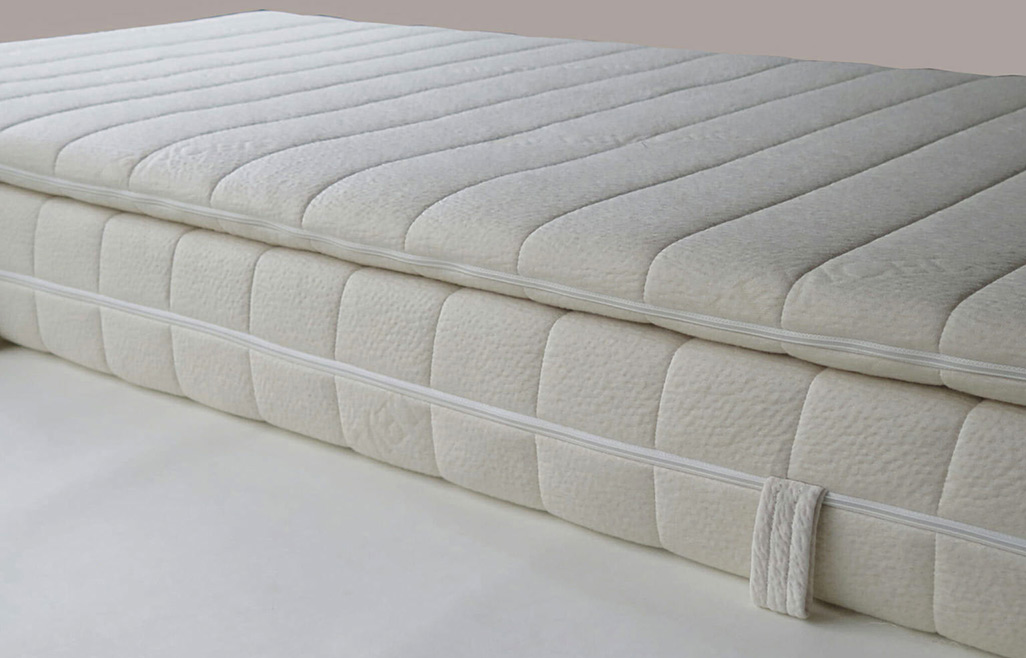
Matratze Lyra mit Topper
Futon mattress
The term futon, as everyone knows by now, comes from Japan and describes the traditional Japanese sleeping mat, which is filled with cotton and is only laid on the floor (traditionally on tatami / rice straw mats) at bedtime. During the day, the futon is then folded and stored in the closet.
The traditional Japanese futons are quite thin (approx. 8 cm), so that one has ground contact when lying down. This is why the Japanese often lay several futons on top of each other when it gets too hard. Since the cotton in the futon has the property of compressing and hardening strongly, lying on futons has always been a hard thing to do.
The futon was introduced in Europe in the course of a fashion wave in the eighties. The futon fashion, however, did not come to us from Japan, but via the USA and England, and did not bring us Japanese futons, but Western modified versions. Although these “western” futons, also filled with cotton, were much thicker than the originals, they too were too hard for many people in the long run.
As a reaction to this, the futons were soon filled with latex cores and/or horsehair layers, so that the futon finally became the “futon mattress” and later the “natural mattress”.
We took a different approach and left the futons at least optically and in terms of the lying quality close to the Japanese original, but we also changed the construction. By using a thin layer of latex, covered with horsehair and virgin wool, we have developed the “Japanese-style futon”, which guarantees largely the same lying characteristics in the long run.
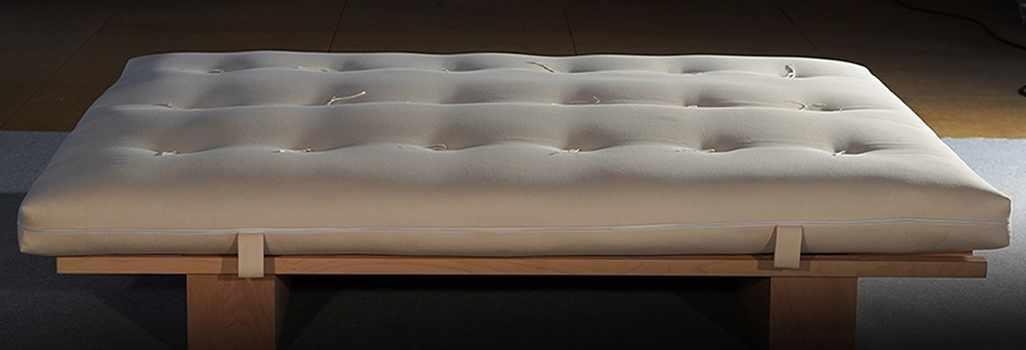
Matratze Biopur-moll

